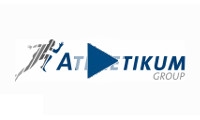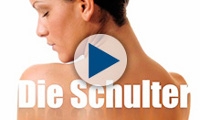Shoulder
Anatomy of the shoulder - Dr. Michael Lehmann
The structure of the shoulder joint
The shoulder joint comprises a total of three "classic" joints and two auxiliary joints, and their complex interaction allows an exceptionally high degree of mobility of the arm.
The relatively small joint socket is surrounded by a ring of cartilage (the labrum) which makes the socket larger. Various capsular ligament structure are attached to this ring, and together they form the labral capsular ligamentous complex. They are responsible for the static stability and passive stabilisation of the shoulder.
The shoulder is also supported by various muscles in a process known as dynamic stability or active stabilisation. This dynamic stability can often be markedly improved with professional physiotherapy.
The rotator cuff
One of the most important muscle groups that surround the shoulder joint is the rotator cuff, which comprises five different muscle and tendon groups and which separates the actual shoulder joint from a joint space located under the bony roof of the shoulder (sub-acromial space).
The main tasks of the rotator cuff are the centring of the humeral head in the joint socket, the lateral lifting of the arm and the performance of rotational movements.





